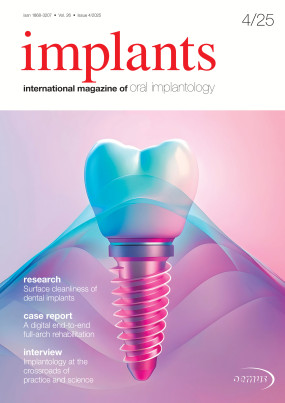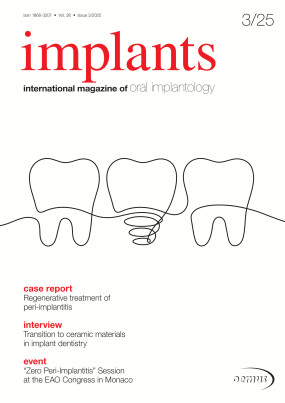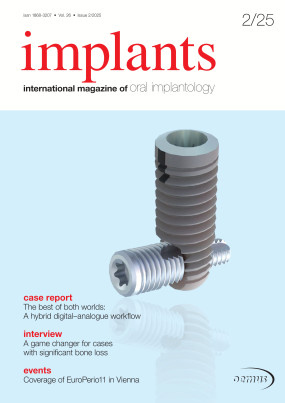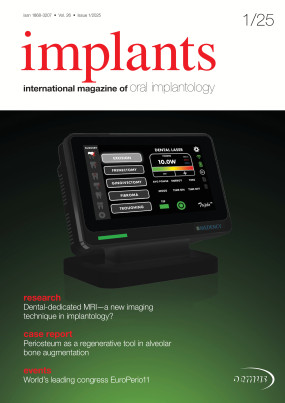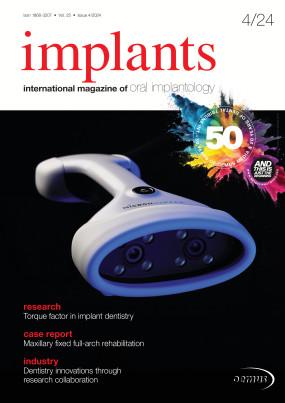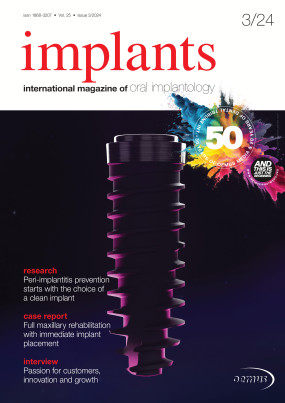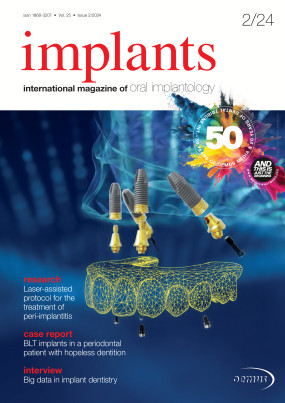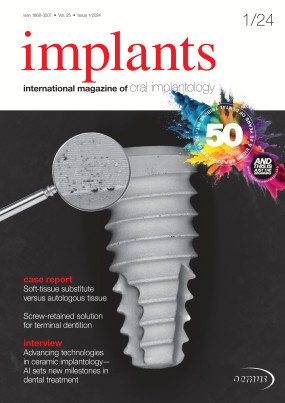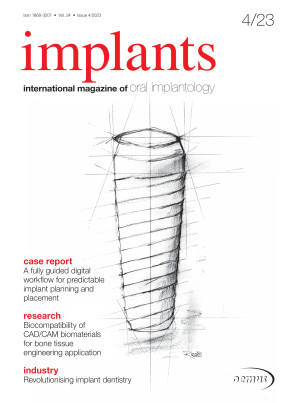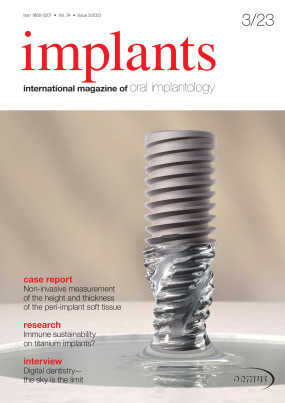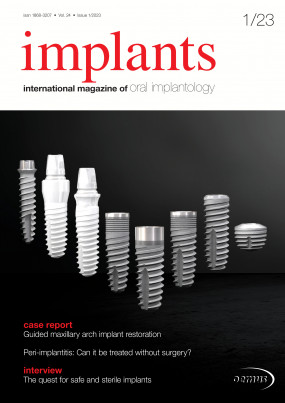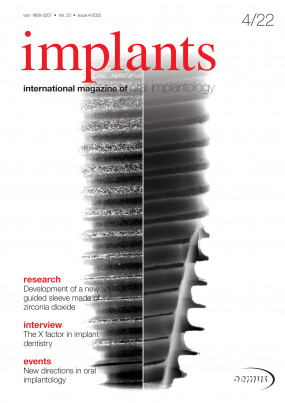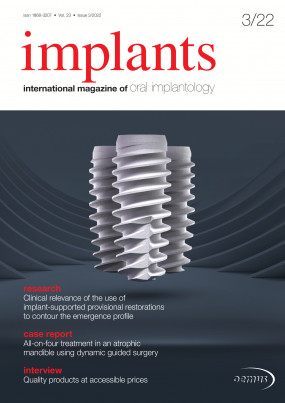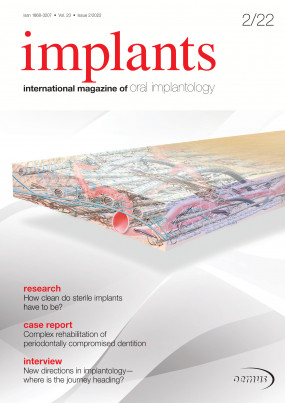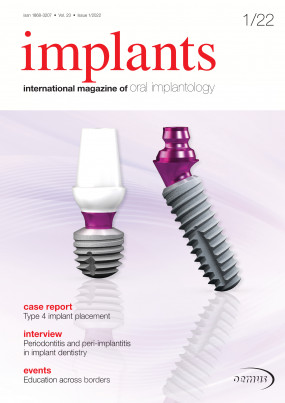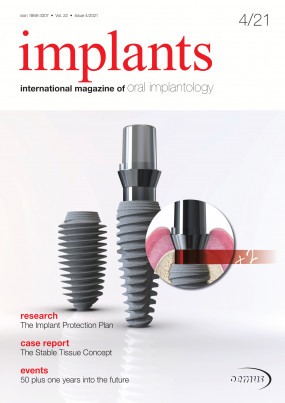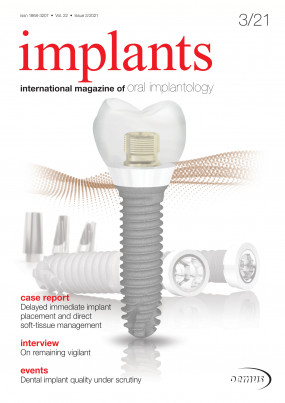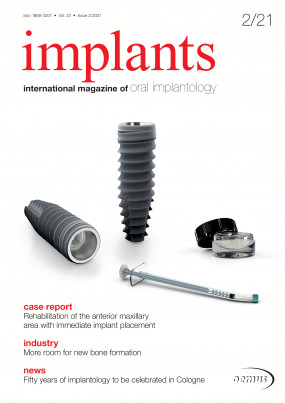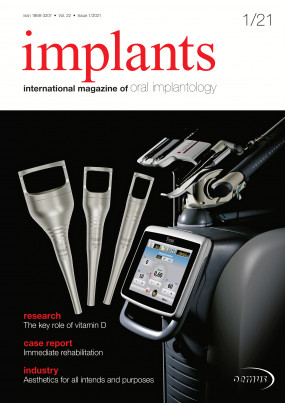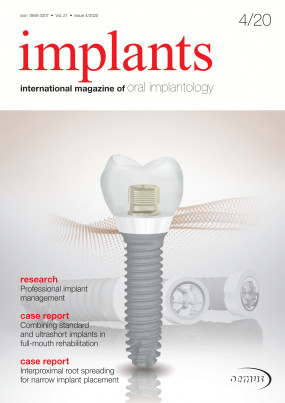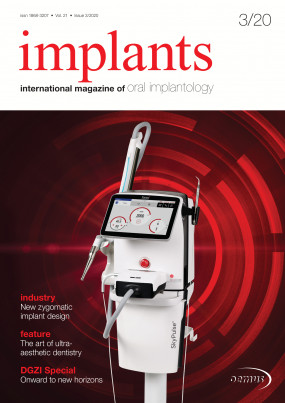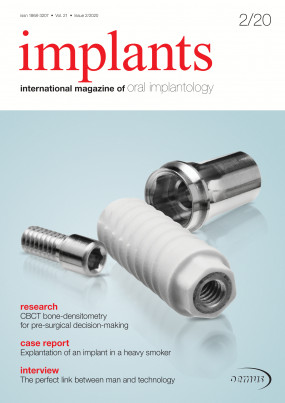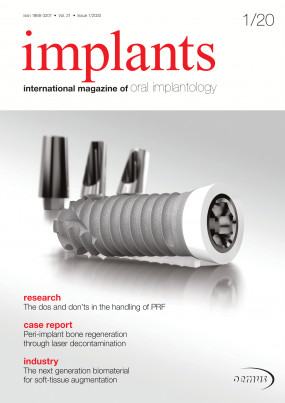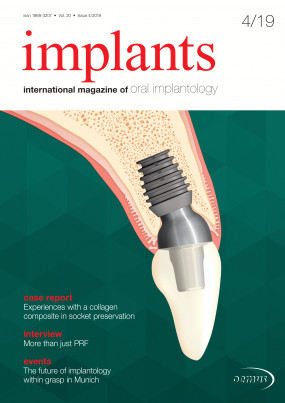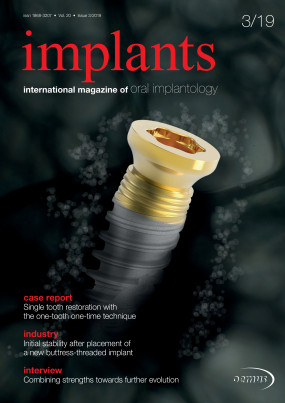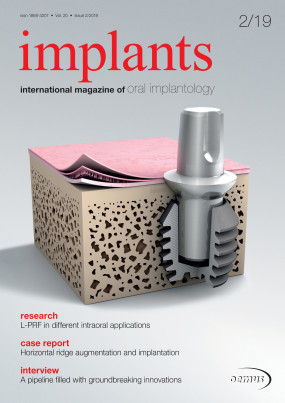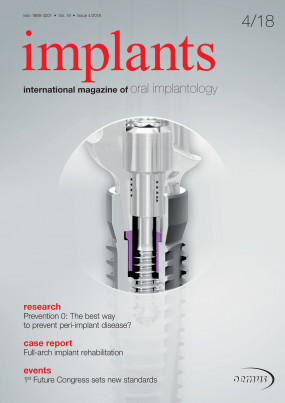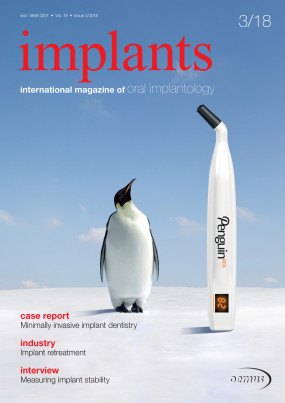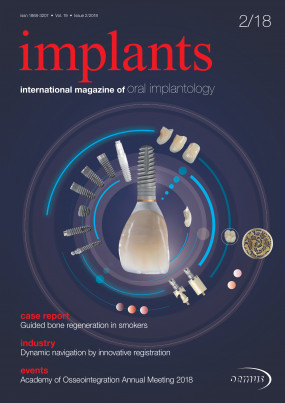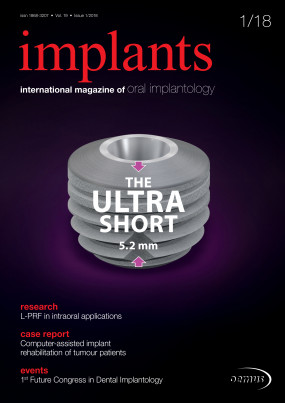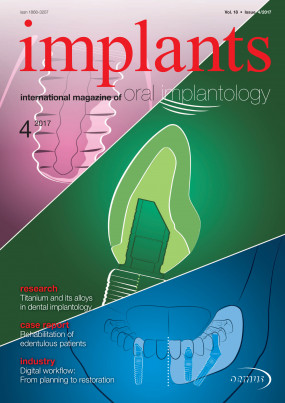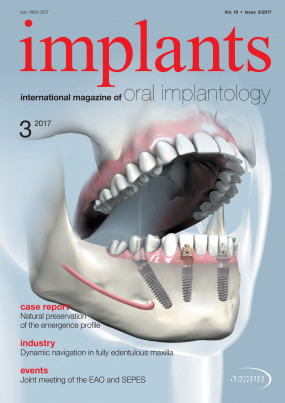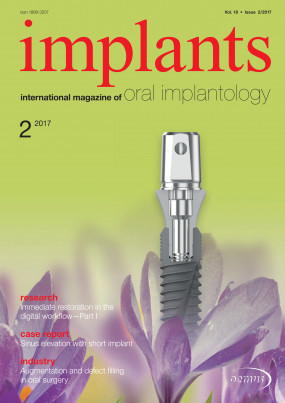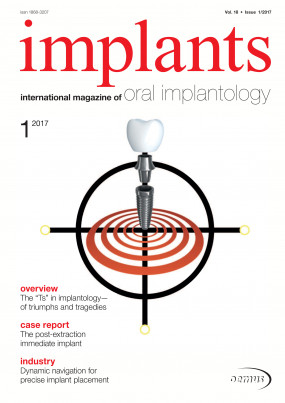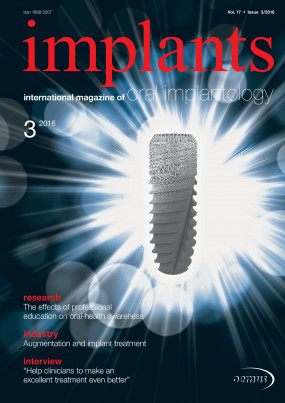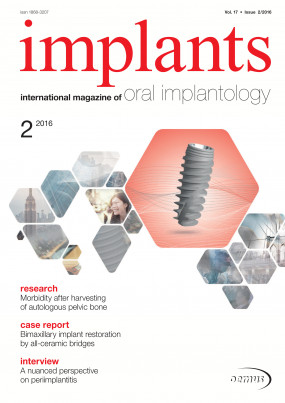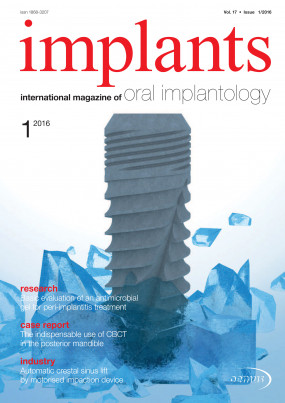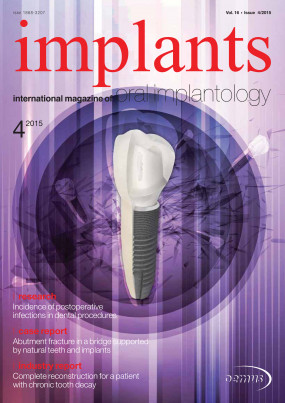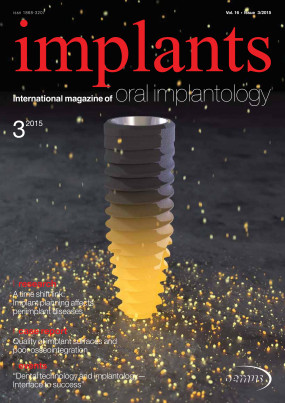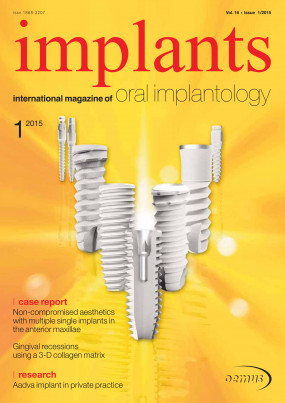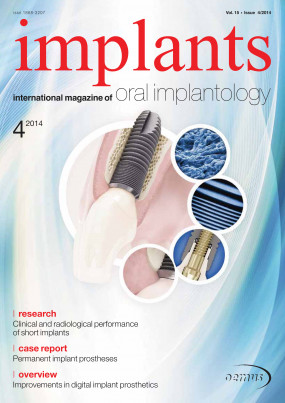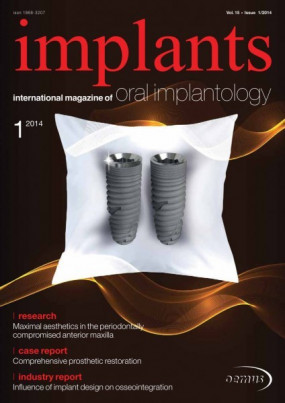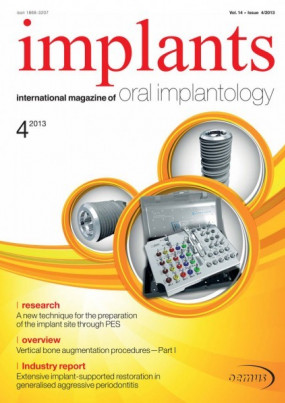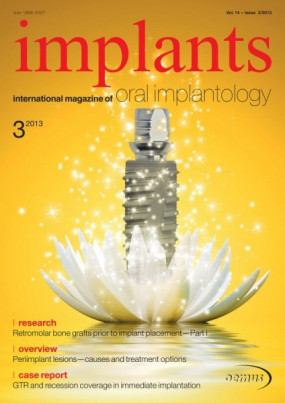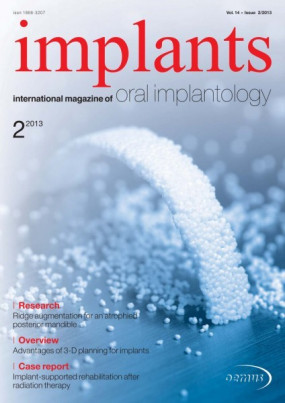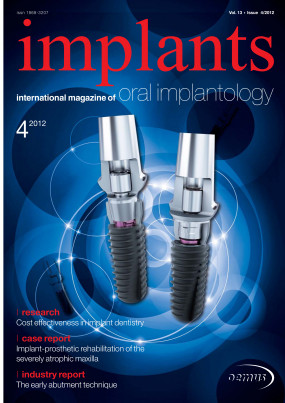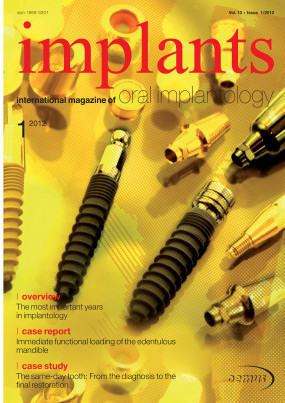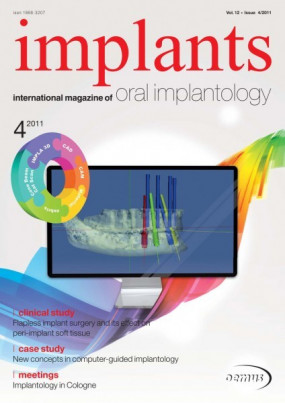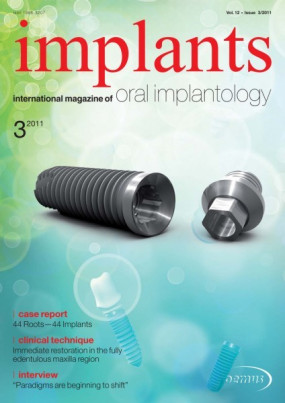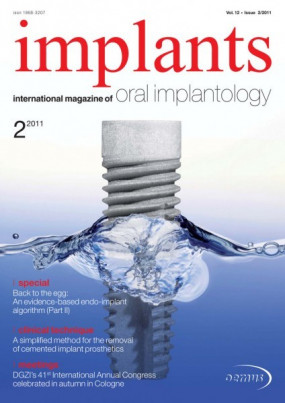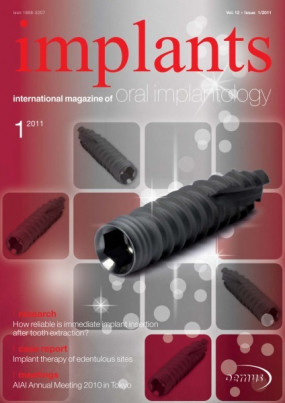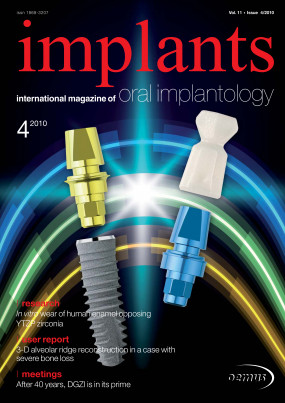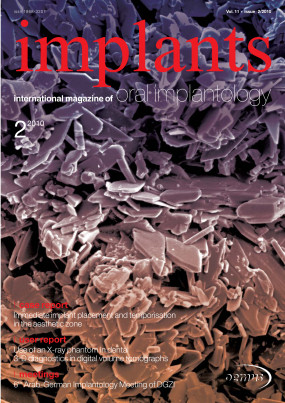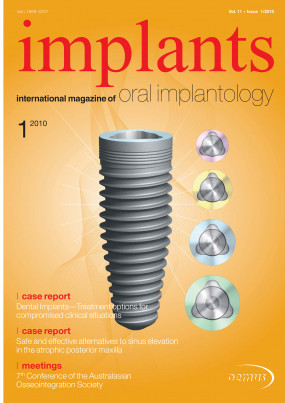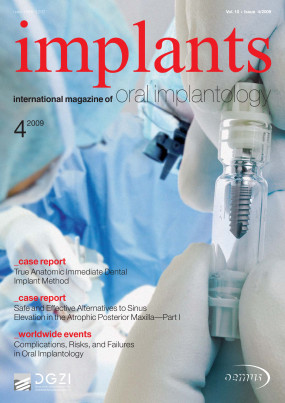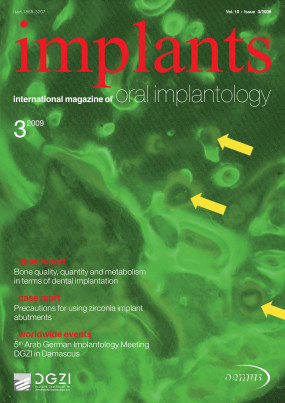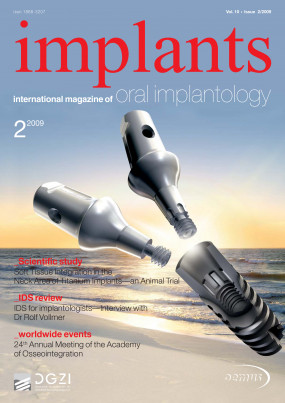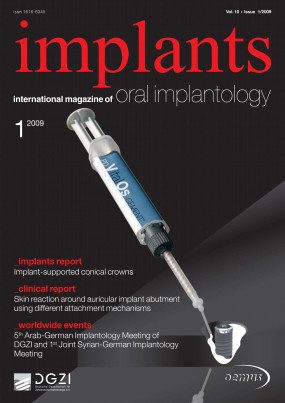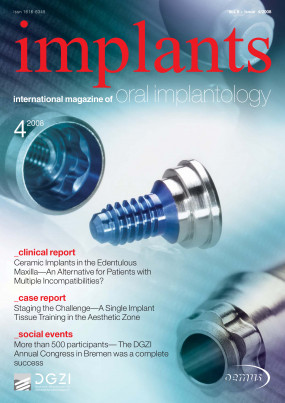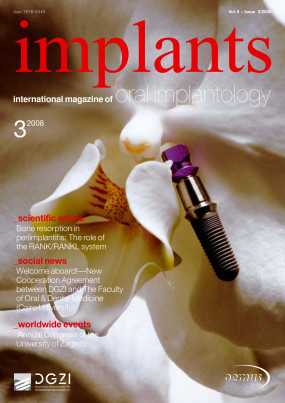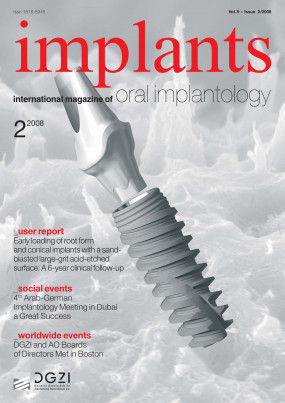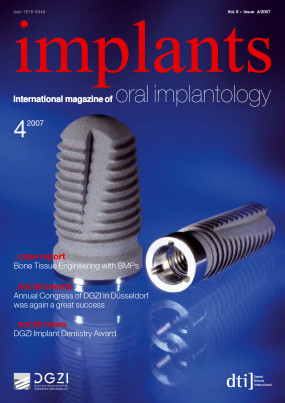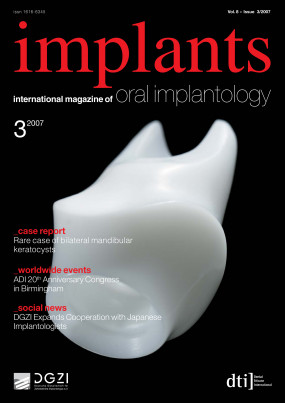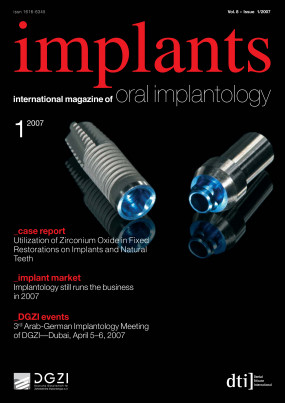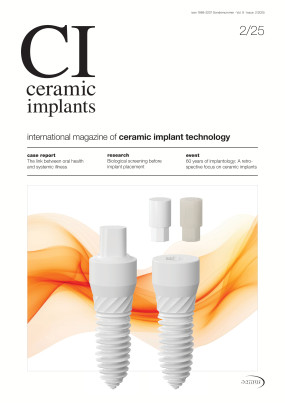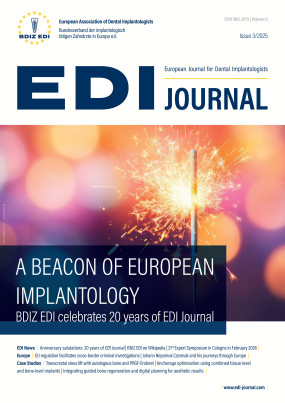Inhaltsverzeichnis
3
Editorial: Minimally invasive implant therapy can be implemented in many ways
Dr Georg Bach, President of the DGZI
We can look back with gratitude and pride on the successful international annual congress of the German Association of Dental Implantology, which took place this year in Berlin in Germany. A common theme ran throughout many of the contributions to the scientific programme: the demand for a minimally invasive procedure that is as gentle on the tissue as possible...
6
Development of a new guided sleeve made of zirconia dioxide
Leonard Vollmer, Dr Rainer Valentin, Dr Rolf Vollmer, Prof. Werner Götz, Germany
The field of dental implantology has developed enor- mously over the last 50 years. Not only the actual dental implants but also the placement techniques and the possibilities of predictable planning have changed and improved greatly. In order to make implant placement in the jaw safer and as accurate as possible, methods have been developed to use 3D data obtained in advance. This technique became possible after the development of CT by Hounsfield in 1972 and the introduction of reduced-radiation CBCT.1–3...
12
Snake technique in the treatment of posterior peri-implant soft-tissue defects
Drs Cosmin Dima & Iulia Florea, Romania
Soft-tissue peri-implant defects (papillary loss, decrease of mucosal volume, gingival recession, dehiscence, alteration of the ridge colour) are common complications of implant treatment and affect the final aesthetic result and implant stability in the long term.1, 2 Many factors can influence the onset of peri-implant soft-tissue defects. Facial bone loss and thin biotype promote peri-implant recession,3 and a soft-tissue thickness of less than 2 mm promotes peri-implant marginal bone loss.4, 5 ...
18
Guided one-stage and two-stage implant placement in the anterior zone: A three-year follow-up
Dr Paula Corvello, Brazil
Certain situations do not allow for immediate placement of implants in the anterior region, mainly when the buccal plate is absent and/or the periodontal phenotype is very thin. In these cases, choosing the surgical technique and biomaterials based on the clinical situation is critical. Furthermore, it is crucial to respect tissue healing times before proceeding to the next phase of treatment...
24
Peri-implant bone augmentation using the subperiosteal periimplant augmented layer technique and a bovine-derived bone block
Prof. Leonardo Trombelli, Italy
A 50-year-old, non-smoking, systemically healthy female patient presented for implant-supported rehabilitation of an edentulous area in the left posterior mandible (Fig. 1). After treatment for Stage II periodontitis, the patient had a bleeding on probing score of < 10% and no sites with a probing depth of ≥ 5 mm and was enrolled in a supportive periodontal care programme...
28
Simultaneous implantation and augmentation of a buccal bone defect with biologised bone substitute material
Dr Haki Tekyatan, Germany
In implant dentistry, we need sufficient bone and soft tissue for long-term and prognostically safe stability. This is a good prerequisite for long-term success in order to achieve secure stability of the implant and the surrounding peri-implant soft tissue. Buccal defects are often found in our practice and are frequently caused by physiological remodelling processes after tooth extraction. These remodelling processes after tooth loss are scientifically very well studied and proved. Especially the loss and degradation of the bundle bone results in a wide variety of defect morphologies.1–3
32
Screw-retained restoration of maxillary right first molar and second premolar
Dr Anthony Bendkowski, UK
The following case report, presented in a step-by-step manner and elucidated in detailed images (Figs. 1–18), describes the treatment of a 64-year-old female patient who presented to our practice complaining about the free-end gap starting at the second premolar in the maxillary right quadrant resulting from the extraction of her failing maxillary right second premolar and first molar by her general dental practitioner...
34
The X factor in implant dentistry
An interview with Dr Dirk U. Duddeck and Dr Ken S. Serota, Germany & USA
Research to determine the consequences and clinical relevance of avoidable contamination and quality deficiencies in dental implants, are promoted and commissioned in collaboration with renowned universities by the CleanImplant Foundation. The project was initiated in 2016 by Dr Dirk Duddeck, dentist, and biologist, who is working in this field of research for more than 15 years. In September 2022, they opened their new office in New York City with Dr Ken S. Serota, as a dedicated ambassador of the initiative. He will bring awareness of the problem of preventable, manufacture-created contamination of medical devices to the North American dental community. implants—international magazine of oral implantology spoke with the two scientists about their achievements, motivation and goals...
36
38
2022 international annual congress of the DGZI—New directions in oral implantology: Where is the journey taking us?
Dr Georg Bach, Germany
In the 52 nd year of its existence, the oldest European professional society for implantology, the German Association of Dental Implantology (DGZI), is continuing to break new ground with a view to the future, organisational modernity, attractiveness of content and a new form of presentation. Presented by 50 speakers and attended by a good 250 participants—the move to a new hotel necessitated by the cancellation of the original hotel did not al- low for more—75 table clinics and livestreaming of two surgical tutorials were the focus on Friday, the first day of the congress, whereas Saturday was all about science...
42
Nations united by innovation 2022 EAO congress celebrates comeback in new hybrid format
A review report by Janine Conzato, Germany
For the last two years, the annual scientific meeting of the European Association for Osseointegration (EAO) could only take place virtually owing to the SARS-CoV-2 pandemic. From 29 September to 1 October, the 29th EAO congress took place this year as a hybrid format for the first time in its history, consisting of a face-to-face event held at Palexpo exhibition and congress centre in Geneva and a virtual evening programme—much like the EAO Digital Days in the last two years. A rich programme with numerous educational and networking opportunities awaited participants...
46
EFP calls for applications for second edition of digital innovation award into the future of digital dentistry
European Federation of Periodontology, Spain
Since October applications can be made for the second edition of the EFP Innovation Award for Digital Solutions for Gum Health, which recognises digital-technology projects for patients, dentists, and researchers that will contribute to improving gum health. The annual competition, financially supported by Haleon (one of the EFP’s partners), seeks to promote research in Europe and around the world and is open to all EFP national societies. Three prizes (of €10,000, €6,000, and €4,000) will be awarded for digital innovations that contribute to gum health in one of three ways: ...
47
From 1 to 3 December, global dental implants manufacturer Straumann will be holding its first International Esthetic Days congress at the Palma Convention Centre in Palma de Mallorca. The event will gather top dental professionals from around the world and across a wide area of expertise. During the congress, 16 international speakers and four Straumann Group representatives, including the company’s CEO, Guillaume Daniellot, will share insights into the latest clinical and technical developments in aesthetic dentistry...
